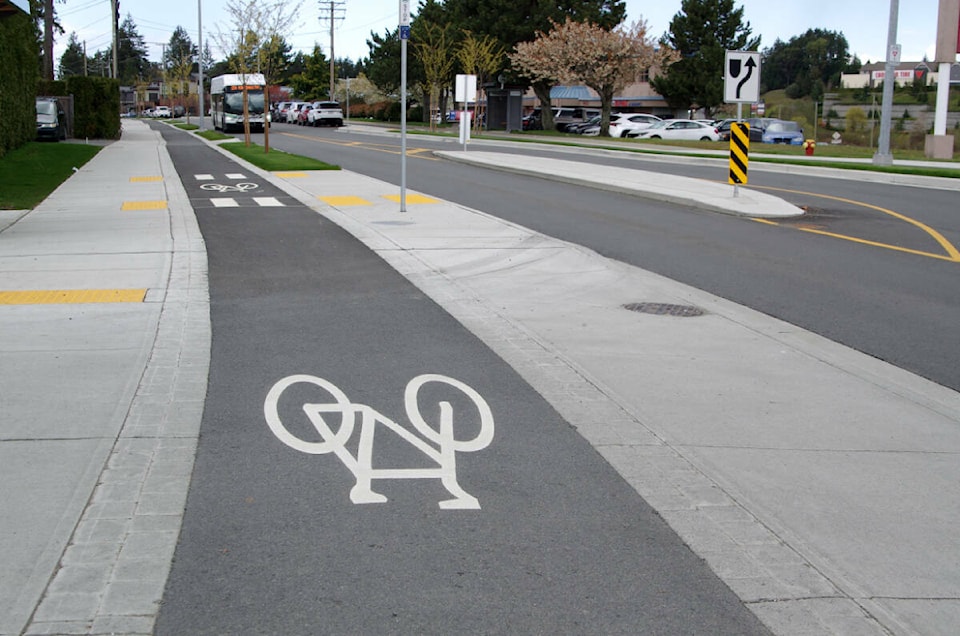BY SARANYA PARTHIBAN
Can you attend school, complete shopping, and stroll through a park in Nanaimo within a 15-minute walk from home? I have never met someone who said ‘yes’ to this question.
It is evident that Nanaimo has the opportunity to become a walkable city, but the journey toward a 15-minute city isn’t just about shorter commutes. In simple terms, it’s about connecting people, helping businesses thrive, and creating a better city for everyone.
In a rapidly urbanizing world with growing environmental anxieties, a concept is poised to revolutionize how we live in cities: the ‘15-minute city.’ Coined by professor Carlos Moreno, this idea envisions communities where every necessity is within a short walk or bike ride from home. This offers convenience and a pathway to a more sustainable and fulfilling urban existence.
It takes less than 20 minutes to get anywhere in Nanaimo by car. However, owning a car is financially prohibitive for many, particularly newcomer students. This makes basic tasks like grocery shopping and attending school difficult. Nanaimo residents rely heavily on their cars. For everyday transportation, 88 per cent of Nanaimo residents use personal vehicles.
As per the State of the Nanaimo Economy report, Nanaimo’s walk score, transit score, and bike score stand at 35, 34, and 36 (out of 100), respectively, measuring pedestrian friendliness, access to public transportation, and biking infrastructure. In contrast, Vancouver boasts significantly higher scores of 80, 74, and 79 for walk, transit, and bike accessibility. Nanaimo residents, who generally drive for work, study, dining, and leisure, spent nearly 10 per cent of their household income, around $9,000, on transportation in 2021.
Implementing a 15-minute city concept has enormous potential for Nanaimo’s future. Nanaimo can improve the quality of life for all people while lowering its environmental footprint. It’s possible by focusing more on walkability, accessibility, and sustainable transportation. This ecological transformation focuses on four pillars: Proximity, diversity, density, and ubiquity. They intend to fulfill essential social functions such as living, working, supplying, caring, learning, and enjoying.
Have you ever wondered why living in Nanaimo feels more like living in a suburb than a city? The reason lies in traditional urban planning methods, which divide residential areas from commercial and industrial zones. To transform into a 15-minute city, every square metre that is already built should be re-purposed. Mixed-use development, where residential, commercial, and recreational spaces coexist, fosters social activity. This development can strengthen and promote local business growth and job opportunities closer to one’s home.
Fortunately, Nanaimo’s city plan identifies urban centres and envisions mixed-use development. Considering the rapid growth in population, mixed-use development patterns must be encouraged beyond the urban centres that the city plan highlighted. This approach reduces the travel distances, making it more feasible for people to walk or cycle for daily activities.
Nanaimo can fully realize the 15-minute city potential if it executes smart urban planning and a sustainable transportation network as envisioned in the city plan. Let’s advocate for better urban planning, invest in infrastructure for walking and cycling, and support mixed-use development. Together, we can transform Nanaimo into a truly livable city for all its residents.
Saranya Parthiban is a master of community planning student at Vancouver Island University.
OPINION: All of us together can help lift up the downtown
OPINION: Forward-thinking cities should embrace pre-zoning
OPINION: Nanaimo is in need of food-centric urban spaces
